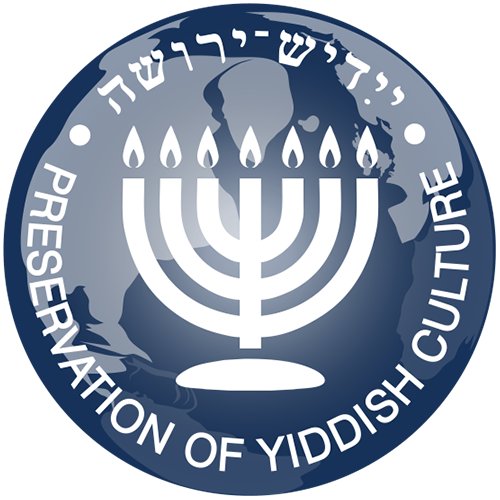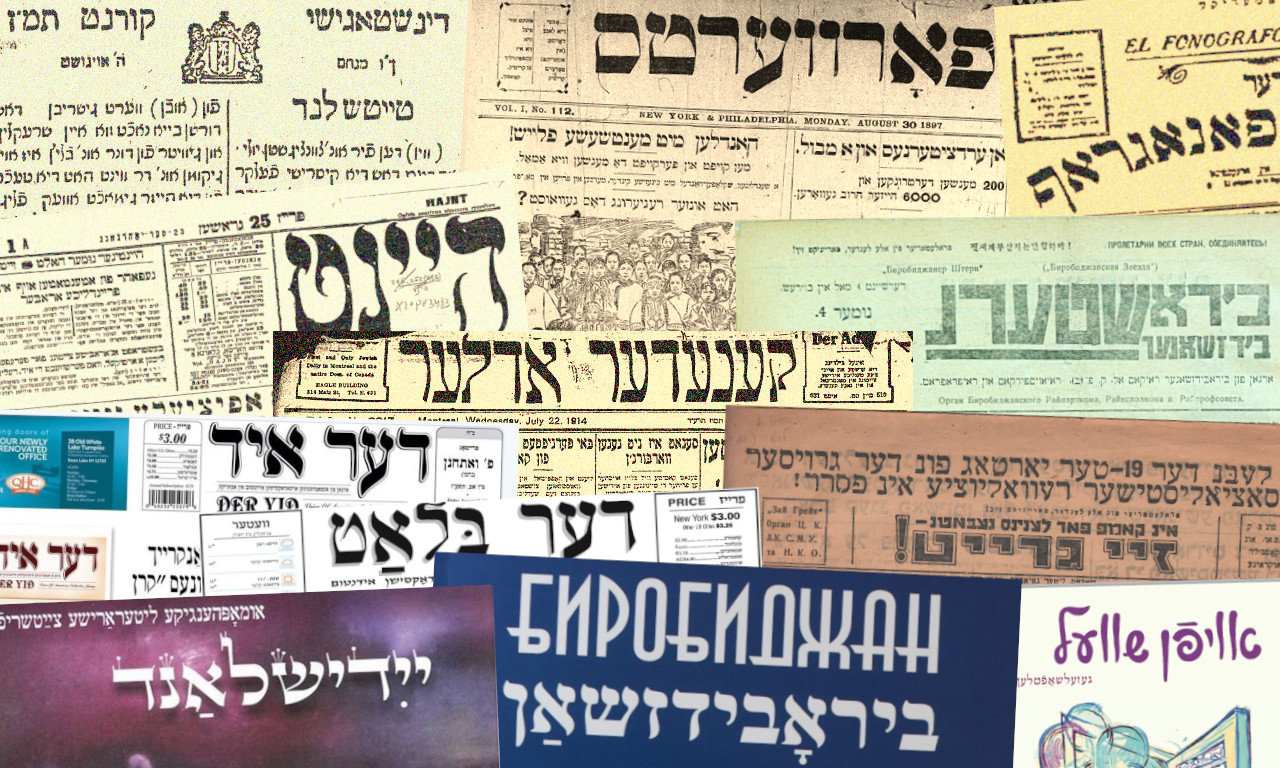Yiddish Press
The Yiddish press is at least three and a half centuries old. In 1686–1687, the first known regular newspaper in this language, called Kurantn, was published in Amsterdam. It appeared twice a week, every Tuesday and Friday. During the 18th century, various Yiddish periodicals were circulating in Western and Central Europe. Some Jewish jounals of this time period were, however, written in German rather than in Yiddish, although transcribed with Jewish letters.
The rapid development of the Yiddish press, centered in Eastern Europe, began in the 19th century. The journalist Alexander Zederbaum (1816–1893) established the first modern Yiddish weekly, Kol Mevaser. It was published in 1862-1873 in Odessa. Besides news, Kol Mevaser also featured publicistic and literary works, including those of the greatest Yiddish writers of that time: Mendele Moykher-Sforim (1836-1917), Judah Leib Gordon (1830-1892), Avrom Goldfaden (1840-1909) and Yitzkhok Yoel Linetsky (1839-1915).
Toward the end of the 19th century, Yiddish newspapers became widespread in the Russian Pale of Settlement, as well as in the Austrian Galicia. Mass emigration of Eastern European Jews to America facilitated the appearance of an American Yiddish press at the same time.
Literary periodicals appeared in Yiddish shortly before 1890. Three personalities may be considered their main founders:
1. In 1888–1889, Sholem Aleichem (1859–1916) published the almanac Yidishe Folks-Biblyotek.
2. In 1888–1896, Mordechai Spektor (1858–1925) published the almanac Hoyz-Fraynd.
3. In 1891–1893, Yitzkhok Leybush Peretz (1852–1915) published the almanac Yidishe Biblyotek.
Yiddish press reached its peak in the first half of the 20th century. Hundreds of periodicals were published, from daily newspapers to yearbooks, in the USSR, Poland, the USA, Canada, Australia, South Africa, Argentina, France, Great Britain, Palestine and a number of other countries. This press was very diverse in its content: religious, communist, Bundist, Zionist, “yellow”, literary, scientific, pedagogical, child-oriented, etc. The extermination of millions of Yiddish-speaking Jews during the Holocaust and the linguistic assimilation of younger Jews in the USA and other counries untouched by the Nazi atrocities caused its gradual decline.
In the USSR, all Yiddish press was liquidated in 1948 during the official anti-Semitic campaign. Editorial staff, journalists and writers were presecuted, and even Jewish fonts were destroyed. In 1961, the literary magazine Sovetish Heymland was established in Moscow. It existed up until the collapse of the USSR – and a few years later, in 1993-1999, renamed as Di Yidishe Gas – under the permanent editorship of Aron Vergelis (1918-1999). One notable exception was Birobidzhaner Stern, the regional Yiddish newspaper published in the Jewish Autonomous Region since 1930. Its publication was never interrupted. However, since Yiddish was not taught in Soviet schools after 1949, the number of people capable of reading these publications dramatically decreased during the second half of the 20th century, as the older generations passed away.
Yiddish also suffered from persecution in the early State of Israel. In the early 1950s, it was forbidden by Israeli law to publish a daily newspaper in this language. Only one Yiddish newspaper, Letste Nayes, was allowed to be published in Israel thrice a week since 1957.
The founding fathers of the new Jewish state saw Yiddish as a threat to the hegemony of Hebrew viewed as the only national language of the Jews. Despite these restrictions, the literary magazine Di Goldene Keyt was established in Tel Aviv in 1948. It received the financial support from the Histadrut, the Israeli national trade union, and continued to get published until 1995 under the permanent editorship of Avrom Sutzkever (1913–2010).
As of today, in the 21th century, most of old historical Yiddish periodicals have ceased to exist, while only a few new ones appeared. One notable exception are over a dozen ultra-Orthodox Yiddish weekly newspapers and monthly magazines published today in New York. Of this substantial publication industry dominated by the Satmar Hasidim, three weekly newspapers are the most notable: Der Yid, Der Blat and Di Tsaytung. However, a detailed description of this thriving ultra-Orthodox press is beyond the scope of our focus on Yiddish culture as a universal phenomenon, as it promotes self-isolation and views Yiddish primarily as a language specific for the close-knit Hasidic communities. Contemporary secular Yiddish newspapers and magazines can literally be counted on the fingers.
1. The quarterly literary magazine Yidishland is published entirely in Yiddish. It is printed in two parallel editions, in Israel and in Sweden.
2. The journal Afn Shvel is published twice a year by the League for Yiddish in New York:
3. The weekly newspaper Birobidzhaner Stern is published in Russian and Yiddish in the Jewish Autonomous Region of Russia.
4. The Yiddish and Polish monthly Dos Yidishe Vort is published in Warsaw by the The Social and Cultural Association of Jews in Poland (TSKZ).
5. The literary yearbook Birobidzhan is published in Russian and Yiddish in the Jewish Autonomous Region of Russia.
6. The literary yearbook Di Grine Medine is published in Dutch and Yiddish in Amsterdam.
Some of these publications, besides the paper editions, also have electronic forms.
In addition, the New York newspaper Forverts, associated with the English newspaper Forward, publishes daily Yiddish articles online (the paper version ceased to exist in 2019).
The New York literary online literary monthly magazine Yiddish-Branzhe, established in 2017, publishes its materials entirely in Yiddish.
The online semi-academic journal In Geveb publishes materials in English and Yiddish, mostly focusing on researching historical literary pieces rather than publishing new ones.

